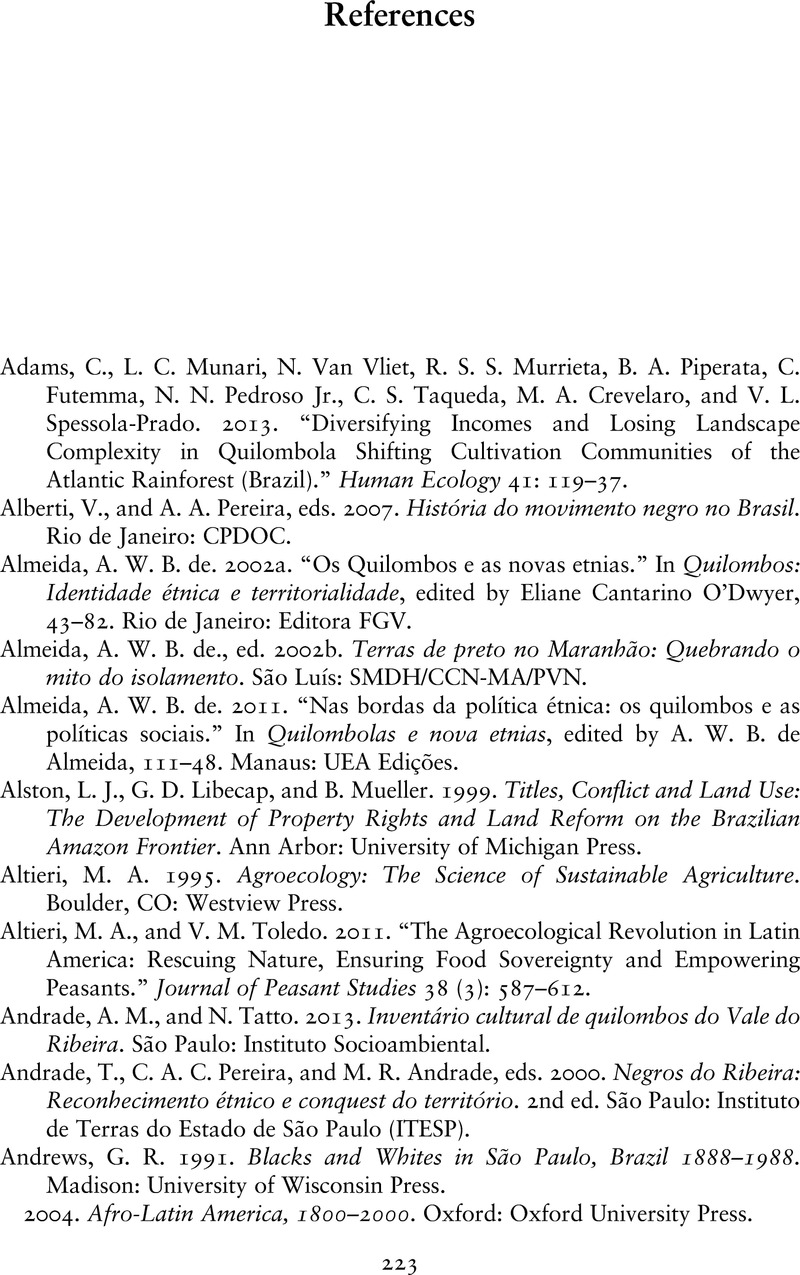Book contents
- For Land and Liberty
- Cambridge Studies on the African Diaspora
- Dedication
- For Land and Liberty
- Copyright page
- Contents
- Illustrations
- Abbreviations
- Acknowledgments
- Introduction
- 1 History, Heritage, and Resistance
- 2 Ethnic Cultural Politics Trumps Black Land Rights
- 3 Quilombola Recognition and Criminalization of Blackness
- 4 Land, Labor, and Livelihoods
- 5 Ethnic Tourism and the Commodification of Quilombola Culture
- Conclusion
- References
- Index
- References
References
Published online by Cambridge University Press: 21 April 2021
- For Land and Liberty
- Cambridge Studies on the African Diaspora
- Dedication
- For Land and Liberty
- Copyright page
- Contents
- Illustrations
- Abbreviations
- Acknowledgments
- Introduction
- 1 History, Heritage, and Resistance
- 2 Ethnic Cultural Politics Trumps Black Land Rights
- 3 Quilombola Recognition and Criminalization of Blackness
- 4 Land, Labor, and Livelihoods
- 5 Ethnic Tourism and the Commodification of Quilombola Culture
- Conclusion
- References
- Index
- References
Summary

- Type
- Chapter
- Information
- For Land and LibertyBlack Struggles in Rural Brazil, pp. 223 - 236Publisher: Cambridge University PressPrint publication year: 2021

